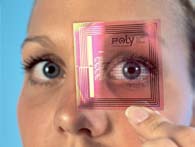
In January 2009, Cisco announced the Cisco Device Connections Program (Cisco DCP), to enable manufacturers to use the Home Network Administration Protocol (HNAP) in a variety of network-connected devices. The company claims that HNAP enables a simple, secure and open approach for devices to be set up and configured with other HNAP-enabled devices on a home network.
On the consumer electronics front, news reports say that companies like Samsung, Sony and Panasonic are relying on the connected home concept for their next major surge up the ladder, and they already have numerous network-enabled products.
HP offers a range of MediaSmart products including receivers, servers, software and services that help you consolidate all your media files and share them across a range of connected devices at home. The HP Media Smart Connect, for example, is an advanced digital media receiver that turns any high-definition television (HDTV) into a next-generation TV. You can view all your photos, music, movies and videos on your television by connecting it to multiple computers around the home.
You may dream of being able to open all your media on all your devices. But would this be possible? Would all the formats be compatible with all the devices? To overcome this issue, the Digital Living Network Alliance (DLNA) is working to provide a standard. DLNA-certified products ensure that digital content (photos, video and music) is playable across products sharing a wired or wireless network connection. Over the next few years, we can expect to see a range of DLNA-certified products in the market.
The other context of home networking is a little more hi-fi. That is, the computerisation of various household features such as temperature control, lighting, etc, and its centralised control through a panel located either inside the house, outside, or through a mobile device. In India, this will probably be more popular in hotels and offices than in homes – at least in the near future.
Printed Electronics
Imagine being able to make electrically-functional components by ‘printing’ them on materials such as plastic, silicon and ceramics, using normal printing techniques like screen printing, offset lithography and inkjet! Electronics manufactured using such techniques would be very cheap, and especially suitable for low-performance items such as smart tags and flexible displays.
Printed electronics are typically produced by rapidly printing multiple conductive, insulating and semi-conductive layers to build active or passive components such as thin-film transistors or resistors, which in turn form electronic circuits.

As mentioned earlier, regular printing processes in slightly modified forms can be used for this, the special aspect being the inks used for printing. The inks are usually electrically-functional materials composed of carbon based compounds. Organic as well as inorganic materials can be used, the key criteria being that the material should be available in a liquid form. Several such organic materials are available to be used as conductors, semiconductors or insulators. Inorganic materials used are normally dispersions of metallic micro- and nano-particles. A huge break for printed electronics came with the discovery of conjugated polymers, which even won the Nobel Prize in chemistry in the year 2000, and their development into soluble materials.
There are companies (such as Kovio Inc and Merck) that have been making printed semiconductors since 2001, and of late they seem to be venturing into mass production as well. Printing equipment are available from companies such as IBM and Xerox, while the substrates and inks can be had from 3M, Tetra Pak, Mitsubishi Chemicals, etc.
As an interesting aside, printed electronics has led to the invention of ‘plastic memory’, which is expected to be extremely low in cost, although the performance might not be as high as the traditional technologies’. Rewritable, non-volatile memories with data retention of around 10 years or one million cycles can be printed using polythiophenes, a family of polymers that display ferroelectric properties. A German company called PolyIC GmbH & Co KG has used the technology to make a 20-bit memory using polyethylene terephthalate (PET) as the substrate. Another Norwegian company called Thin Film Electronics ASA is also working in this line. It might be some time before we can buy plastic memory off the shelf, but experts predict there will be a lot of progress in this space, soon.
Parallel programming
Four men working in parallel can definitely get more work done than one, but too many cooks can spoil the broth if not managed properly. This is the new twist to the multi-core tale that is emerging now. Multi-core processors are not new anymore – they have emerged victorious even in the desktop and embedded segments, with the industry offering dual-cores, quad-cores and more. The question now is whether developers have the know-how, techniques and most importantly, the right tools required to program the multiple cores and tap their full parallel processing capacity.






